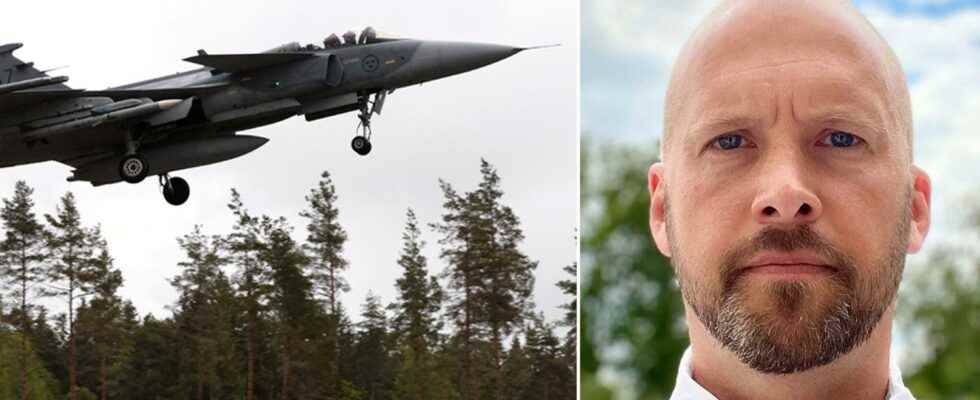Published: Less than 30 min ago
Fighter pilots have been clamoring for new terms to no avail.
30 employees have now gone on leave in protest.
Now the Defense comes with a lightning deal – without having spoken to the union.
– Worrying that people don’t work according to the Swedish model and sit down and talk together, says Per-Martin Sternevi, chairman of the Defense Pilots’ interest organization.
Over 30 Swedish fighter pilots have chosen to take leave in protest after dissatisfaction with wages, working conditions and above all the pension agreements.
Persons born in 1988 or later who were employed by the Armed Forces saw their retirement age raised from 55 to 67 after a changed agreement.
– It was the issue of pension that really made the cup run over, says Per-Martin Sternevi, chairman of the Defense Pilots’ interest organization.
Already last winter, a large number of pilots chose to apply for leave to study.
– It is an overall agreement picture that has gotten worse and worse from year to year. Slowly but surely, everything has disappeared and in the end it turned out that the overall picture of salary and pension is no longer attractive enough.
The criticism: Took too long
Part of the interest organization’s criticism of the Armed Forces is directed at the fact that it took too long to get negotiations going.
– The armed forces have had six months to sort this out in order not to get rid of these individuals, he says.
After the defection, the Swedish Armed Forces released a press release on Thursday announcing that new rules will come into effect.
“This applies to personnel in the unique group of pilots who received changed conditions regarding a special pilot pension after they began their involvement in the Armed Forces,” it says.
The hope is that those who chose to take leave will return and that the others will choose to stay.
Exact details of the rule change are not yet known, but Air Force Chief Carl-Johan Edström says that the people concerned are covered by a transitional rule that allows them to retire at the age of 55.
– It is incredibly important to have got this in place. This means that the pilots who have taken leave have something to relate to, he says.
“Of course I’m self-critical”
Even with the new conditions in place, the Swedish Armed Forces are losing the fighter pilots who have already started their studies.
– If many choose to take leave, it will of course affect our business. We look seriously at the situation that has been, he says and adds that he has full respect for the pilots who took leave.
Carl-Johan Edström accepts the criticism that it took a long time to get an agreement in place.
– It is clear that I am self-critical. It would have been good if we could resolve this earlier. You don’t want to end up in these situations, he says.
More problems remain
Per-Martin Sternevi says that it remains to be seen exactly how the new conditions are structured.
– It is a bit too early to say, but there is a risk that the employer side will still have an advantage, he says.
The conditions that are now in place were taken without the trade union or interest organization being allowed to participate in the talks.
– From our side, it is a bit worrying that you don’t work according to the Swedish model and sit down and talk together, says Martin Sternevi.
Lars Fresker, chairman of the Officers’ Association (union), says that there are still more parts to be solved.
– It’s also about salary and career opportunities, which you don’t solve with this decision, he says in a press release.
